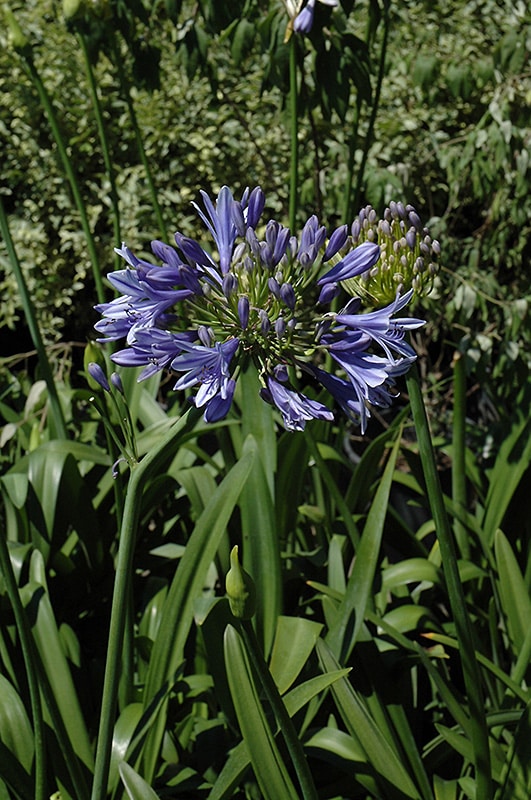Stunning Agapanthus: Enhancing Your Yard's Charm
Stunning Agapanthus: Enhancing Your Yard's Charm
Blog Article
Mastering the Art of Agapanthus Treatment: Essential Steps for Healthy Development and Dynamic Blooms
In the world of gardening, the farming of agapanthus stands as a rewarding endeavor for those that look for to nurture these sophisticated flowering plants. With their striking blooms and graceful vegetation, agapanthus has caught the attention of gardeners worldwide. Nevertheless, achieving optimum growth and lively blooms calls for a nuanced technique that incorporates various important actions. From choosing the right range to mastering pruning methods, the journey in the direction of growing thriving agapanthus plants is complex and holds the crucial to opening the complete possibility of these agricultural gems.

Picking the Right Agapanthus Range

When selecting the right Agapanthus variety for your yard, take into consideration variables such as climate viability, bloom color, and development habit. In addition, consider the environment in your area to guarantee the Agapanthus range you select can thrive in your specific problems. Comprehending the development routine of various Agapanthus varieties is crucial for proper placement within your yard.
Ideal Growing Conditions
Considering the optimal ecological needs is important for effective Agapanthus growing. Agapanthus flourishes in well-draining soil with a slightly acidic to neutral pH level. When growing, choose an area that gets complete sunshine to partial shade. In hotter environments, offering some mid-day shade can prevent scorching of the leaves. Agapanthus plants are sensitive to chilly temperature levels and should be shielded from frost throughout winter months.
To ensure healthy growth and dynamic flowers, plant Agapanthus light bulbs at a depth of about 2-4 inches and area them 8-12 inches apart. Including raw material, such as compost, to the soil can enhance drain and fertility, promoting durable origin advancement. Mulching around the base of the plants helps keep wetness and suppresses weed development. Regular watering is vital, particularly during the expanding period, to keep the dirt continually damp yet not soaked.
Watering and Feeding Tips
Preserving correct wetness levels and providing crucial nutrients are crucial elements in the care routine for Agapanthus plants. When it comes to watering Agapanthus, it is important to strike a balance. These plants favor regularly moist dirt but are vulnerable to root rot if overwatered. During the growing season, water deeply once a week, making sure the dirt is well-draining to prevent waterlogging. In hotter climates or throughout durations of drought, more frequent watering may be essential to keep the dirt uniformly wet. However, decrease watering in the winter season to stop water logged problems.
Feeding Agapanthus is important for advertising healthy and balanced development and prolific blooms. Apply a balanced fertilizer, such as a 10-10-10 formula, in the very early spring as brand-new development arises. Repeat this application every 6-8 weeks throughout the expanding period. Stay clear of excessive fertilization, as it can bring about rich vegetation at the cost of blossoms. Constantly adhere to the maker's guidelines for proper dilution and application approaches. By adhering to these watering and fertilizing suggestions, you can ensure your Agapanthus plants flourish and produce dynamic, long-lasting flowers.
Pruning Methods for Agapanthus
Pruning Agapanthus plants at the proper times and with appropriate techniques is important for keeping their wellness and advertising optimum development and blooming. The ideal time to trim Agapanthus is in late winter months or very early spring before new growth emerges.
Deadheading spent flowers can also redirect the plant's power right into generating even more blooms rather than setting seeds. If you want to gather seeds for proliferation, leave some blossoms to fully grown and completely dry on the plant.
Bear in mind to use tidy, sharp devices to make accurate cuts and minimize the risk of introducing illness. Agapanthus. Routine trimming will assist maintain your Agapanthus looking neat and healthy while making certain a bountiful screen of stunning flowers
Taking Care Of Usual Insects and Diseases
After view it now making certain More Help proper pruning techniques for Agapanthus, it is essential to address typical insects and diseases that can affect the health and wellness and vitality of these plants. One common insect that affects Agapanthus is the Agapanthus gall midget.
In addition, Agapanthus plants can suffer from origin rot if they are planted in badly draining pipes soil. By being watchful and taking punctual action against bugs and conditions, you can help your Agapanthus plants prosper and produce vivid blossoms. Agapanthus.

Conclusion
Finally, mastering the art of agapanthus treatment entails picking the appropriate selection, providing ideal planting problems, appropriate watering and fertilizing, ideal trimming methods, and addressing typical bugs and conditions. By complying with these important actions, you can make certain healthy and balanced development and lively blooms for your agapanthus plants. Keep in mind to regularly check and maintain your plants to advertise their general health and longevity.
To ensure healthy and balanced development and vivid flowers, plant Agapanthus light bulbs at a deepness of about 2-4 inches and area them 8-12 inches apart. By complying with these watering and feeding pointers, you can ensure your Agapanthus plants flourish and generate lively, long-lasting blooms.
One check out here usual parasite that affects Agapanthus is the Agapanthus gall midget. In addition, Agapanthus plants can experience from root rot if they are planted in poorly draining dirt. By complying with these crucial steps, you can ensure healthy and balanced development and vibrant blooms for your agapanthus plants.
Report this page